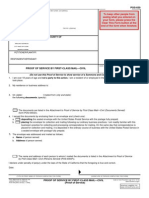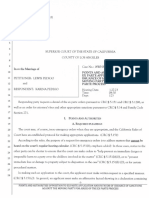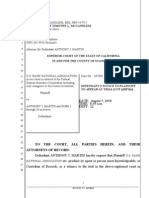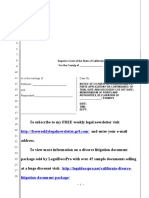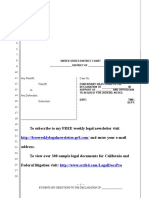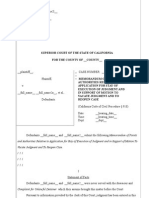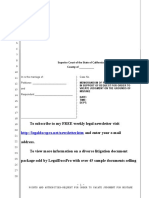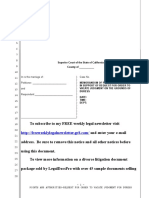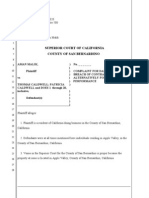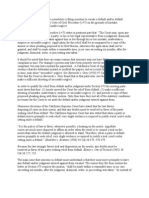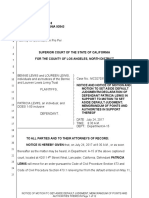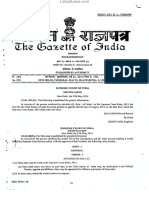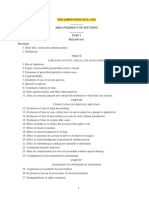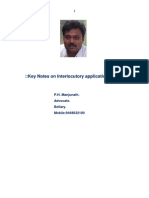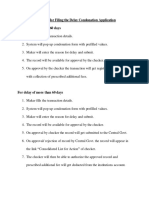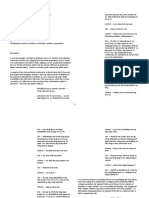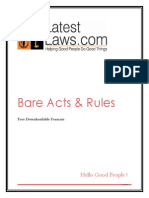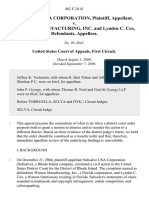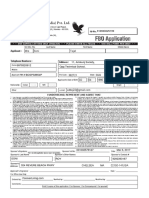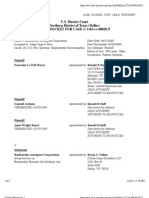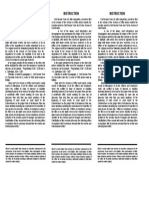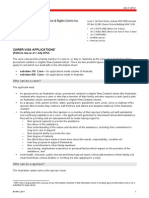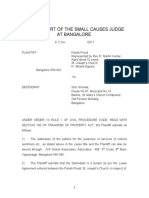0% found this document useful (0 votes)
622 views4 pagesEx Parte Applications1
This document provides guidance on ex parte applications in California courts. It summarizes the notification requirements, which vary based on the type of court but generally require notice by 10am the day before. It also provides a checklist of required documents, including an application, notice declaration, points and authorities, proposed order, and copies for the court and parties. Exceptions and additional rules apply for family, probate, juvenile and other specialty courts. Consult the applicable laws and rules to ensure compliance.
Uploaded by
EraCopyright
© © All Rights Reserved
We take content rights seriously. If you suspect this is your content, claim it here.
Available Formats
Download as PDF, TXT or read online on Scribd
0% found this document useful (0 votes)
622 views4 pagesEx Parte Applications1
This document provides guidance on ex parte applications in California courts. It summarizes the notification requirements, which vary based on the type of court but generally require notice by 10am the day before. It also provides a checklist of required documents, including an application, notice declaration, points and authorities, proposed order, and copies for the court and parties. Exceptions and additional rules apply for family, probate, juvenile and other specialty courts. Consult the applicable laws and rules to ensure compliance.
Uploaded by
EraCopyright
© © All Rights Reserved
We take content rights seriously. If you suspect this is your content, claim it here.
Available Formats
Download as PDF, TXT or read online on Scribd
/ 4
You might also like
- 100% (1)2015 Attorney Misconduct Reporting Canon 3D(2) California Code of Judicial Ethics - California Commission on Judicial Performance Director Victoria B. Henley Chief Counsel - California Supreme Court Chief Justice Tani Cantil-Sakauye, Justice Mariano-Florentino Cuellar, Justice Ming Chin, Justice Carol Corrigan, Justice Kathryn Werdegar, Justice Goodwin Liu, Justice Leondra Kruger Supreme Court - Judicial Council of California Chair Tani G. Cantil-Sakauye - CJP San Francisco25 pages




